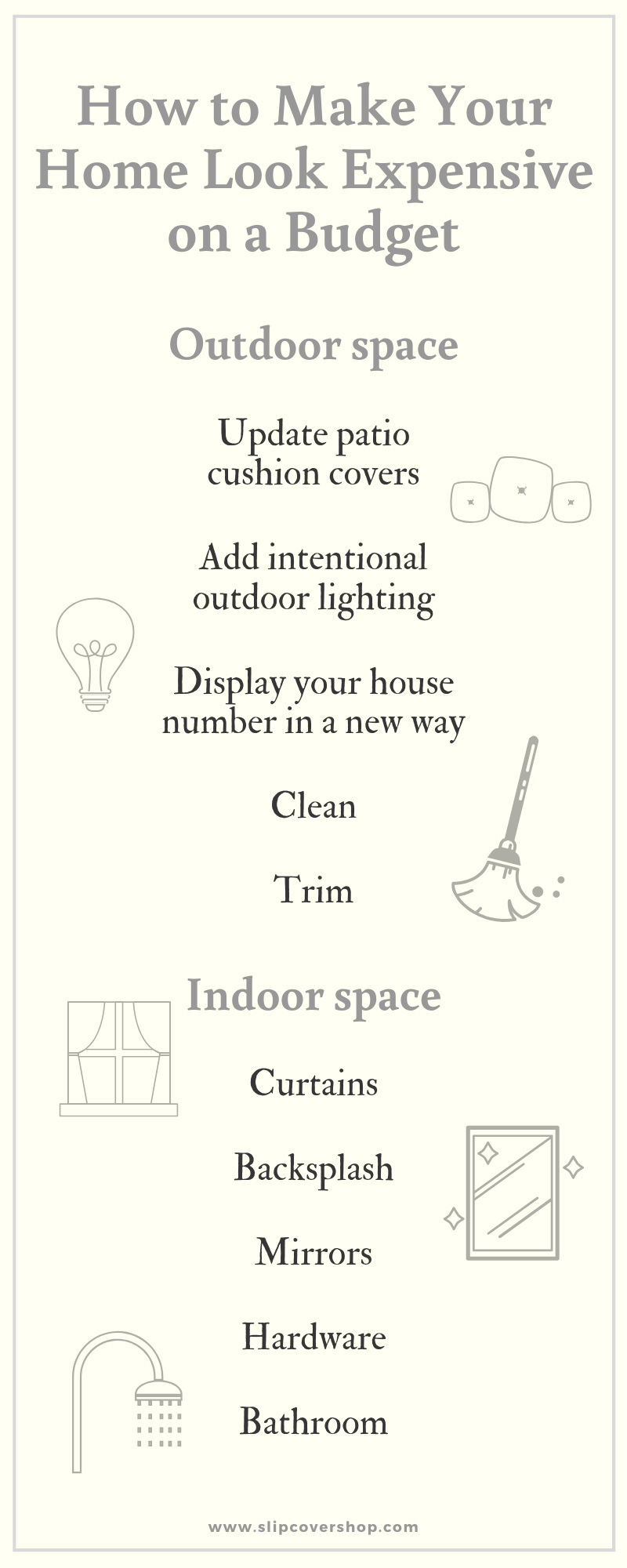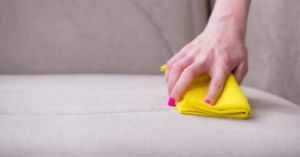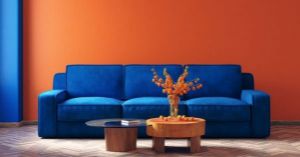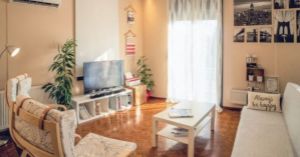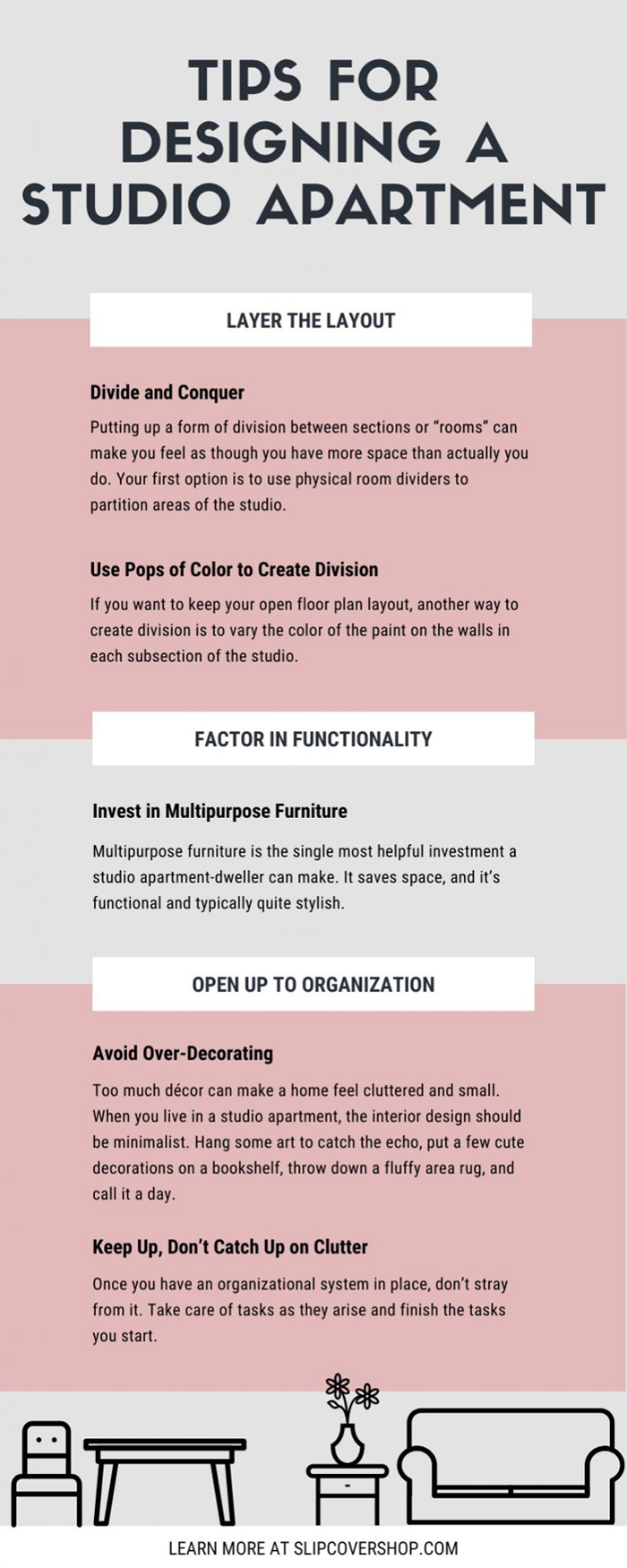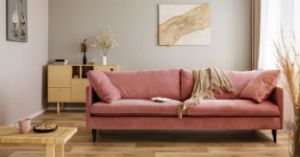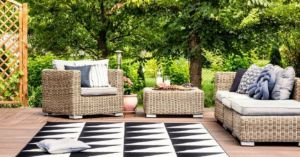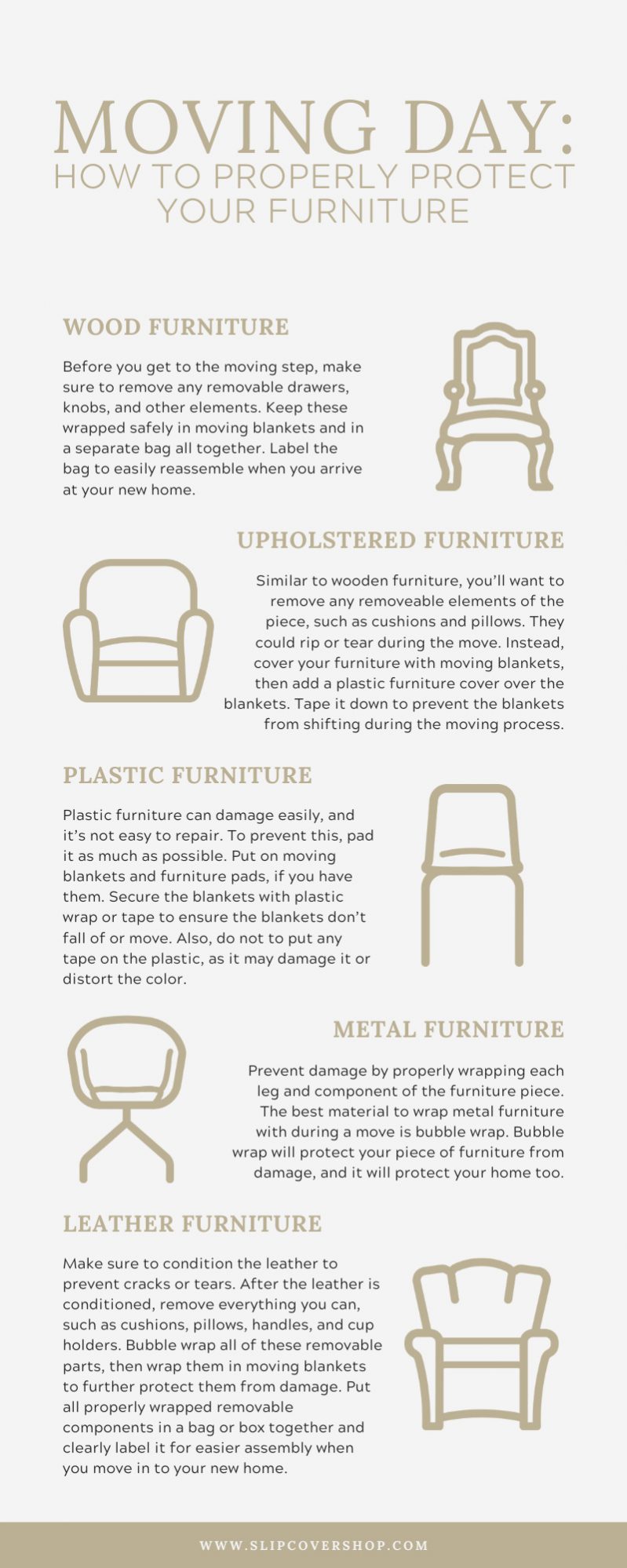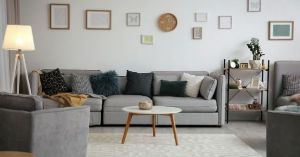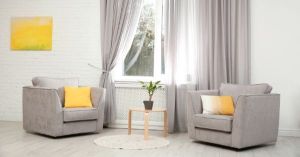Updating your home can make it feel brand new, but many renovations threaten to break the bank. Some minor changes can make all the difference in the way a home makes an impression. You don’t need to shell out money to make your home appear more expensive than it is; there are subtle changes you can implement to make your home impress and stand out. Here is a guide on how to make your home look expensive on a budget.
Outdoor space
Curb appeal is an often-underrated element of a home that can make or break how it is perceived. People will make a judgment on your home and its value within the first few seconds of viewing it. The way your outdoor area looks matters, and some small updates can increase your home’s perceived value instantly.
Update patio cushion covers
Your porch or patio may be easily viewable from the street or your driveway. If you’re using old, worn down cushions, or simply left them out in the rain one too many times, you can make a simple update to revive them. Add patio furniture cushion covers to your old cushions to make them look brand new again. This can be a fun way to add color, style, and practicality to your home. It also can help protect your furniture longer—with a cover on, you’ll be able to remove and wash the cover as needed to keep it looking great.
Add intentional outdoor lighting
While you may have the standard outdoor lighting, adding more intentionally-placed lighting to your outdoor space can really transform your home. Put up lights lining the walkways, especially those leading to your door. Line your driveways with small lights as well to illuminate your entire property. Lights help to guide both the eyes and the feet of guests. If they arrive after dark, they’ll be happy they can see where they’re going—all because of your thoughtful lighting placement.
Display your house number in a new way
If your house still has the number it was built with, chances are it’s quite outdated. You can purchase new numbers from any craft or home improvement store and customize them to your home’s style. Choose large, statement numbers and hang them in a strategic location—they should be visible from the street without straining, but they can still be placed on a slope or in another non-traditional way. This adds interest and keeps people intrigued with your home. It’s also crucial to add lighting to your house numbers to help guests and couriers find your house in the dark.
Clean
Cleaning up your outdoor space can turn it from dingy to sparkling. Clean out your gutters, power-wash your hardscaping, and clean your garage door. Doing these three simple things can make it look like professionals care for your home.
Trim
Mowing the lawn often and keeping your shrubbery trimmed can give the appearance that you have a full-time landscaping crew under your employ. In reality, you can trim your shrubbery yourself and mow your lawn. These are upkeep tasks that should be done weekly and scheduled into your life. The difference a trimmed lawn makes on a home’s perceived value is exponential. If your lawn has dying plants, take them out and replace them with new, lively plants or lawn ornaments.
Indoor space
Once your guests are inside your home, you have many options to really make your home look like a million bucks—and you’ll spend very little! Subtle and small changes inside your home can make a big difference in your living areas’ overall feel.
Curtains
High ceilings indicate an expensive home. While you most likely can’t literally raise your roof, you can give your rooms the illusion of loftier ceilings with your curtain placement. Place your curtain rods much higher than your windows and make sure your curtains touch the floor to create an illusion of higher ceilings and larger windows.
Backsplash
There are stick-on backsplashes you can purchase that are inexpensive and will transform your kitchen. There’s no need to do a full kitchen remodel to make your kitchen seem updated—you can make small changes, such as adding a backsplash, installing new cabinet handles, re-grouting your floors, and washing your rugs. These are all small and inexpensive changes that add color and style to your kitchen. If you do all of these small updates, your kitchen may just look brand new.
Mirrors
Investing in a mirror or two can make your space feel larger and add a touch of class. Purchasing a mirror doesn’t have to be a big expense; you can simply purchase a cheap, frameless mirror and add a regal frame to it later. Resale shops are full of fancy frames just waiting to be hung with a mirror on the wall. Mirrors—especially in rooms with lots of natural lighting—can visually extend your space.
Hardware
Any hardware around the house may be outdated. Items such as lighting fixtures and faucets are easily overlooked and forgotten about. Since these are staples you look at and use multiple times a day, it’s easy to block out their outdated look. If you’re not looking to invest in brand new hardware just yet, there’s an easy trick to bring your hardware into the present day. Spray paint can transform your fixtures and hardware. Try a copper tone for a modern look or a polished silver for an upscale, classic feel. There are endless options that make your home brand new with a simple spray paint can. Bonus Tip: Don’t forget about your outlet covers! These are easily painted and can really tie your home together.
Bathroom
Think about the last time you updated your shower curtain hooks. It’s most likely been a while, and if so, they are ready to be swapped out again. New shower curtain hooks can cut down on dirt, make your shower curtain slide easier, and make your bathroom look brand new. You should also take a look at your toothbrush holder. Wash it out, and if it’s beyond salvaging, buy a new one. These small changes make a big difference in how expensive yourhome appears to guests.
